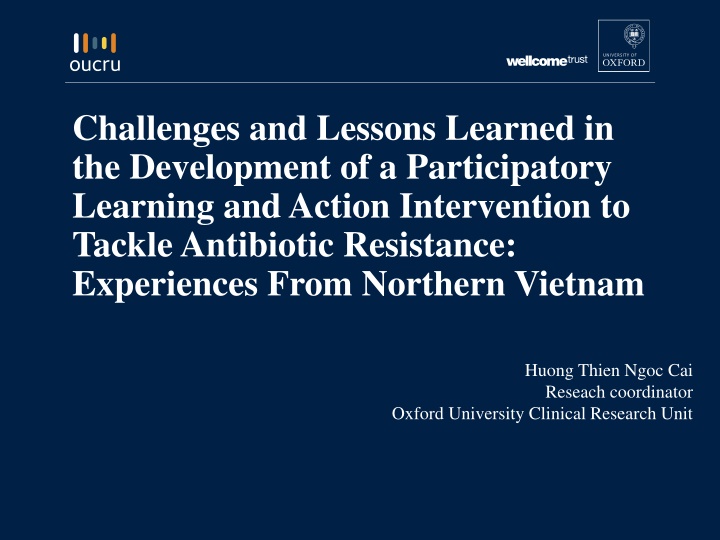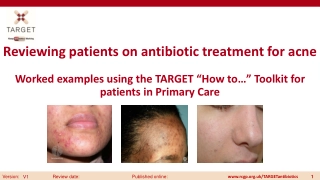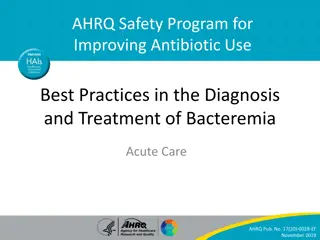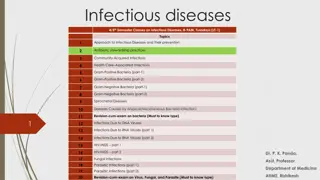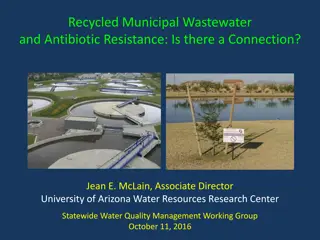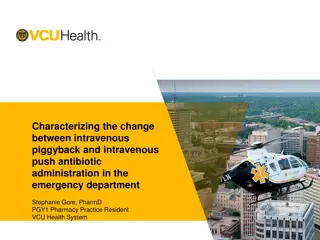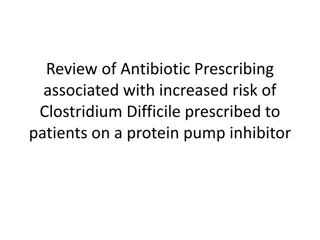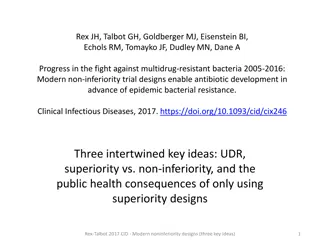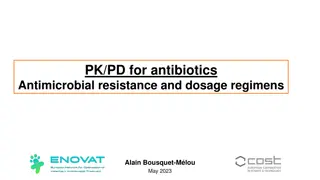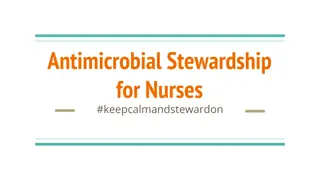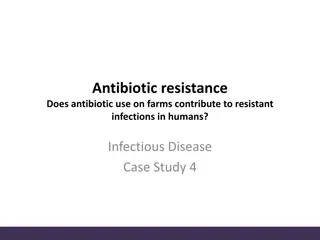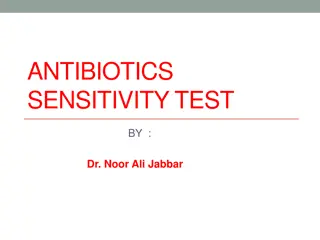Challenges and Lessons Learned in Antibiotic Resistance Intervention
This article delves into the challenges faced and lessons learned in developing a participatory learning and action intervention to address antibiotic resistance in Northern Vietnam. It highlights the importance of understanding the local context, engaging stakeholders, building trust, and recruiting participants effectively. Themes such as accessing background information, language and practice understanding, and stakeholder relationship development are explored in detail.
Download Presentation

Please find below an Image/Link to download the presentation.
The content on the website is provided AS IS for your information and personal use only. It may not be sold, licensed, or shared on other websites without obtaining consent from the author.If you encounter any issues during the download, it is possible that the publisher has removed the file from their server.
You are allowed to download the files provided on this website for personal or commercial use, subject to the condition that they are used lawfully. All files are the property of their respective owners.
The content on the website is provided AS IS for your information and personal use only. It may not be sold, licensed, or shared on other websites without obtaining consent from the author.
E N D
Presentation Transcript
Challenges and Lessons Learned in the Development of a Participatory Learning and Action Intervention to Tackle Antibiotic Resistance: Experiences From Northern Vietnam Huong Thien Ngoc Cai Reseach coordinator Oxford University Clinical Research Unit
Content Challenges & Lessons learned Introduction What s next? Background & Photovoice study
1. INTRODUCTION Background This lessons learned from development for Photovoice will be used for a large-scale One Health trial in northern Vietnam and other participatory action-oriented approaches to address AMR The need to improve community understanding and change behavior in antibiotics using and Participatory Learning and Action approach to tackle AMR Nam Dinh is a rural area in the Red River Delta with high levels of antibiotic use in communities and a hotspot for AMR
1. INTRODUCTION Photovoice study Study design 29HN & Photovoice component Stakeholders and participants Aims and Results
2. Challenges and lesson learned Understanding the local context Engagement with the topic of antibiotics and AMR Building trust and motivation Stakeholder relationship development Participant recruitment
Theme 1: Understanding the local context Accessing background information - Limited availability of health- related data about antibiotic use and AMR affected understanding of local context - Gathering local information improves contextual understanding. Local partners can help to provide information that is not online, and where feasible, surveys and interviews can fill information gaps Understanding local language and practice - Study team not familiar with local terminologies and health-related or farming behaviours - It takes time to learn context- specific terminologies, but having a local vocabulary improves understanding and engagement Understanding the context of partnership - Study team not familiar with the local nuances of building relationships with partners - It is important to understand local working dynamics and practices to build effective partnerships
Theme 2: Stakeholder relationship development Balancing top-down and bottom-up approaches Top-down approaches are the norm for government partners, but are contrary to PLA approaches which require engagement and shared decision-making from the bottom-up It takes time to build consensus on the value of community engagement and using a bottom-up approach In order to establish a trusting partnership with high-level stakeholders it may be necessary to strike a balance - - - Clarifying roles The involvement of different stakeholders in the local government management hierarchy proved to be more effective at specific stages of the study than at others Most attention was given to encourage participation among community participants, and local stakeholders did not clearly understand the vision and methods of participatory research Taking time to listen and clarify roles Identify at which stages of the study cycle each stakeholder should be involved Involve local stakeholders in decision- making and establishing the shared vision so that they can be more actively involved - - - - -
Participant recruitment Recruiting participants Purposive sampling is the preferred approach for local and national partners, but is contrary to methods used for participatory learning and action (PLA) in which participants self-select to take part Participation by self-selection was not always possible due to logistical and time-constraints For short-term projects purposive sampling is sufficient, but need to be aware of introducing possible biases For longer-term engagement projects, taking the time and effort to negotiate and implement participation by self- selection is important Working closely with local partners to build trust and explain the study and recruitment objectives is crucial for either approach - - - - -
Building trust and motivation Establishing trust with participants It was difficult to establish trust due to limited personal interactions, lack of pre-existing connections with the community, and lack of understanding of local context The study team lacked professional or technical expertise related to health or farming, and our organization was unknown in the study area There was an expectation of financial incentives for participation, but this is not something that can be sustained for long-term participation, and creates a power imbalance Participants expected non-financial incentives in the form of knowledge about health and medical care, but this was not included in our study activities COVID-19 situation Working with local stakeholders can provide access to their networks and facilitate personal connections Working with local staekholders who are trusted and have professional expertise can give credibility to establish relationships and legitimate entry into communities Previous experience with projects and consent processes also have an important influence on trust It is important to explore and acknowledge differences in motivations and be flexible and responsive to these differences Discussion with participants and stakeholders about motivations for participation can provide ideas about suitable non-financial incentives Incorporating training or health promotion sessions in engagement activities could provide a strong non- financial incentive for participation - - - - - Maintaining motivation - - - - - -
Engagement with the topic of antibiotics and AMR Understanding of AMR antibiotics and antibiotic resistance was a barrier to engaging with communities on this topic - Participants initially thought that overuse of antibiotics was not a threat, or that it was only a threat for other communities, and not relevant to them Limited knowledge about Careful consideration of local terminology and understanding makes communication clearer Identifying pre-existing health concerns and showing how antibiotic overuse and resistance are related makes the issue more relevant Sharing experiences related to antibiotic use revealed that there were impacts closer to home A sense of ownership emerged as the study progressed and participants understood more about the issue and saw their ideas being incorporated into activities - - - - Ownership The project was introduced to the community as a topic they didn t know very much about, but one that we wanted them to take the lead on - - 10
Thank you for your listening!
